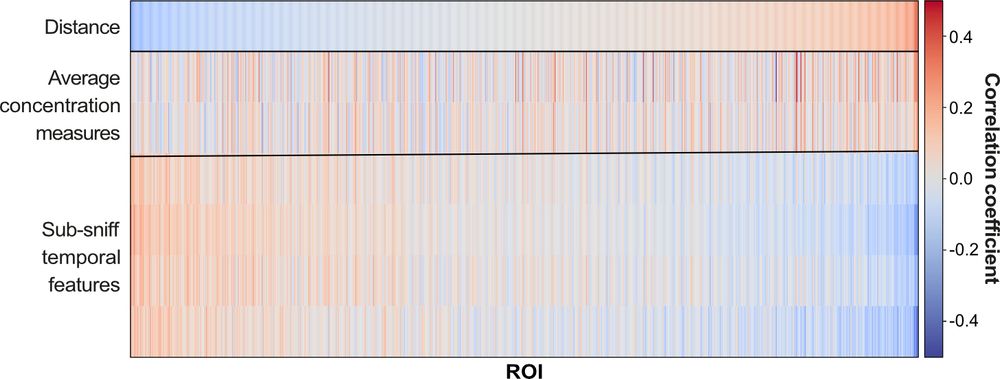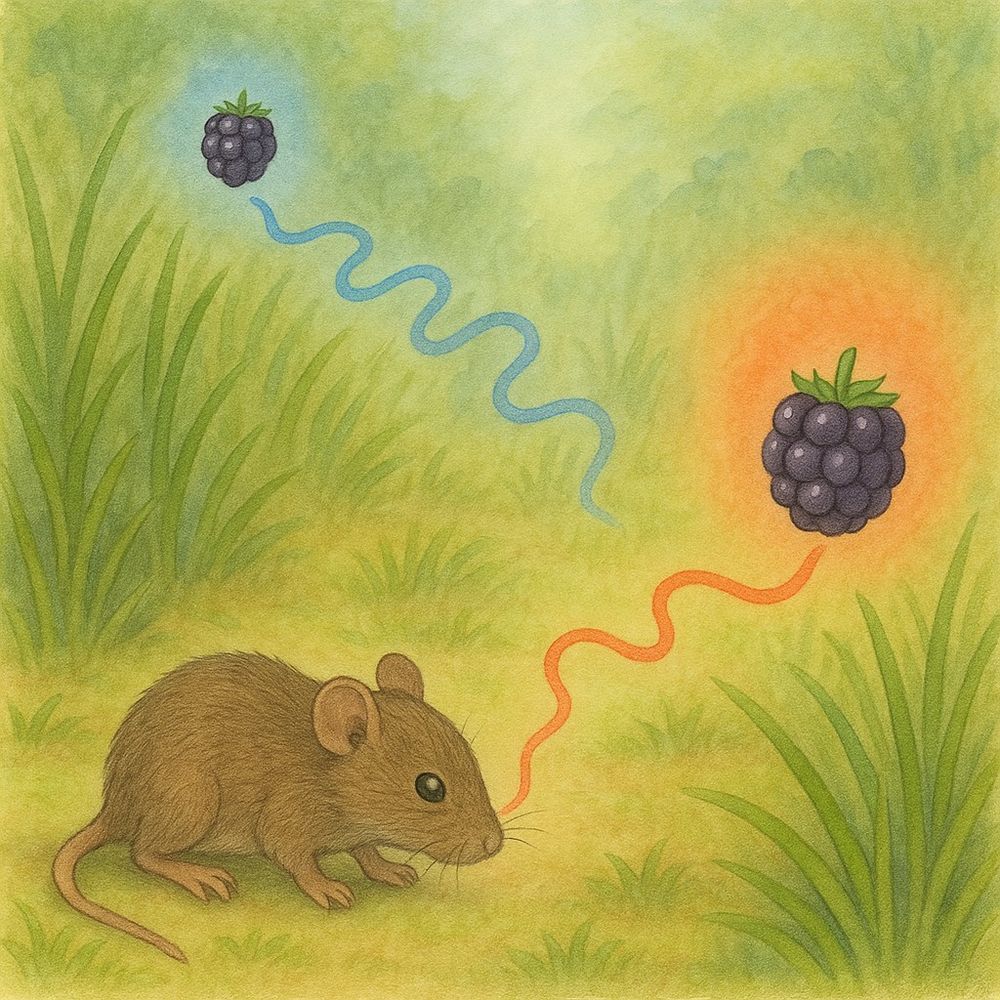Tobias Ackels
@tobiasackels.bsky.social
Asst. Prof. at the University of Bonn, Germany. Interested in sensory neurophysiology and behaviour with a focus on olfaction
5/6 Neural responses were better predicted by rapid temporal fluctuations in the plume than by average concentration. This suggests that the dynamic plume structure serves as a core sensory cue for distance.

May 18, 2025 at 8:41 AM
5/6 Neural responses were better predicted by rapid temporal fluctuations in the plume than by average concentration. This suggests that the dynamic plume structure serves as a core sensory cue for distance.
4/6 We further used in vivo 2-photon calcium imaging to record mitral and tufted cell activity in the olfactory bulb and found that a subset of neurons showed distance-dependent responses, and that population activity reliably encoded odour source distance.

May 18, 2025 at 8:41 AM
4/6 We further used in vivo 2-photon calcium imaging to record mitral and tufted cell activity in the olfactory bulb and found that a subset of neurons showed distance-dependent responses, and that population activity reliably encoded odour source distance.
3/6 These findings show that mammals can extract spatial information from fast, complex odour dynamics, highlighting the role of rapid temporal processing in olfaction.

May 18, 2025 at 8:41 AM
3/6 These findings show that mammals can extract spatial information from fast, complex odour dynamics, highlighting the role of rapid temporal processing in olfaction.
2/6 Using a wind tunnel and olfactory virtual reality, we presented dynamic plumes with complex airflow structure. Through automated, high-throughput behavioural experiments, mice learned to distinguish near vs. far odour sources.

May 18, 2025 at 8:41 AM
2/6 Using a wind tunnel and olfactory virtual reality, we presented dynamic plumes with complex airflow structure. Through automated, high-throughput behavioural experiments, mice learned to distinguish near vs. far odour sources.
1/6 Rodents use olfaction to navigate, especially when vision is limited. But how do they estimate the distance to an odour source?
Our new study shows that mice can estimate the distance to an odour source using sub-sniff temporal features in naturalistic odour plumes.
Our new study shows that mice can estimate the distance to an odour source using sub-sniff temporal features in naturalistic odour plumes.

May 18, 2025 at 8:41 AM
1/6 Rodents use olfaction to navigate, especially when vision is limited. But how do they estimate the distance to an odour source?
Our new study shows that mice can estimate the distance to an odour source using sub-sniff temporal features in naturalistic odour plumes.
Our new study shows that mice can estimate the distance to an odour source using sub-sniff temporal features in naturalistic odour plumes.

